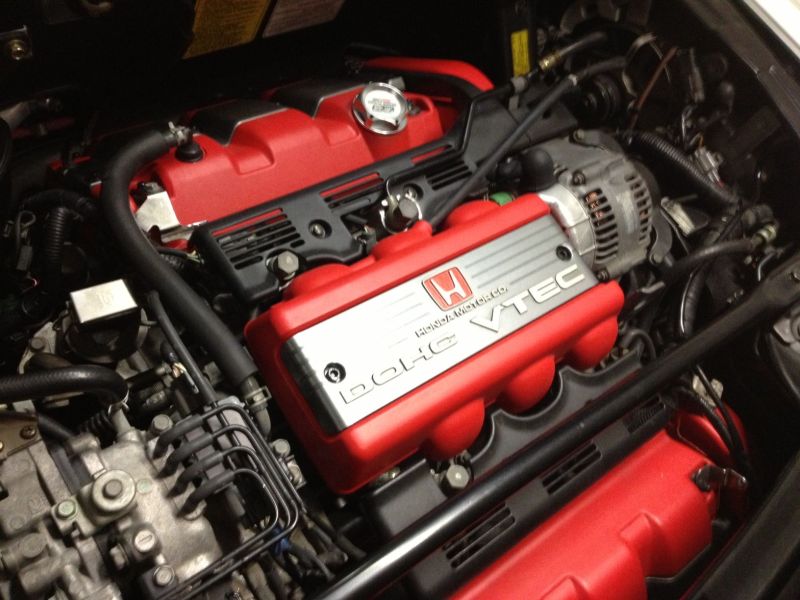You probably do not know what does “engine valve technology” mean if you are not a car enthusiast. However, you may have already heard of terms like “VVT-i” (on Toyota cars), “VTEC” (for Honda), “VANOS” and “Valvetronic” (for BMW), “VarioCam” (Porsche). These are how each auto maker name its engine valve technology. In this article I would try to discuss some interesting stuffs about this topic.
The internal combustion engine in a modern automobile is a 4-stroke engine, and it has intake and exhaust valves. It is easy to imagine that the optimal timing of the open/close of the valves, should not be fixed under all workloads. They should be adjustable depending on engine workloads and engine RPM.
There are two types of adjustment for the valves: (1) adjust the open/close timing (Variable Valve Timing – VVT); (2) adjust the height of the valve being lifted during the open phase (Variable Valve Lifting – VVL).
When engine is working under light workload, you want to have larger timing overlap between intake and exhaust valves (here it means there is a longer time that the intake and exhaust valves are both opened), to generate an EGR effect; However, this will hurt the volumetric efficiency under heavy workload, therefore in that case you want to retard the intake valve lifting to decrease timing overlap.
Timing of when the intake valves should close is much more tricky. Common sense will tell you: during the intake stroke, once the piston has reached bottom dead center, the intake process is finished and the intake valve should be closed.
However this is not true.
During the intake stroke, air near the intake valve will be sucked into the cylinder, forming an area of low pressure. Therefore, outside air will flow into that area, creating a “pressure wave”. This type of wave has kinetic energy, so even the piston has reached the bottom dead center and is going to start the compression stroke, the pressure wave can still send in more air due to its higher pressure.
Therefore the optimal scheme should be: keeping the intake valve opened for a while during the compression stroke, in order to improve the volumetric efficiency.
This is how the idea of “variable valve timing” comes into place. A typical VVT design usually uses a mechanical device to adjust the cam lobe’s rotation phase on the camshaft. However, since the shape of the cam lobe is fixed, the time length between the valve opening and closing is fixed too. That means, it can change the timing, but it cannot adjust the time length.
To be able to adjust the time length, most auto maker uses variable valve lifting (VVL): typical design will involve different cam lobe profiles on the camshaft. Different cam lobe shapes not only changes the height of valve lifting, but also varies how long it can stay opened. Below are some examples of this application:
– For Honda’s VTEC, it includes VVT and VVL;
– For Toyota’s VVT-i, it only has VVT feature;
– For BMW, VANOS = VVT; Valvetronic = VVL;
– For Porsche, VarioCam = VVT + 2-step VVL.
However, a good engine design does not require both VVT and VVL must be used. In fact, as long as the similar output can be achieved, it does not matter whether it has used all kinds of technologies or not. The purpose of using VVL is to increase output, but it can be easily achieved by slightly increasing the cylinder displacement. Therefore, some Porsche GT3 variant’s engines, also some BMW’s high-revving NA engines, they do not use VVL at all.
Summary: do not judge an engine only by looking at whether it use both VVT and VVL or not. You need to see its final output power curve and torque curve.
—
There are 1.2 million unique visitors reading YouWheel.com articles every month. Do you know you can also present your own contents to our enormous reader base? Introducing our new feature: YouWheel Guest Post. We are looking forward to your submission!




Recent Comments